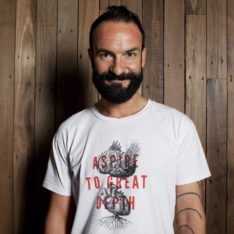Agencies must accept their clients want open relationships, too
Relationships between clients and their agencies are getting shorter, but becoming more possessive isn’t the answer, says Matt Jackson, collaboration and openness is.
I’ve been in a relationship when my partner and I weren’t growing at the same rate. It was horrible. Then it was fatal.
When a partner starts looking outside of the relationship for what they need it gets competitive, then destructive until both parties admit that what they offer and need has changed and the relationship can’t exist the way it was anymore.
 What makes this process most painful is when one party clings to what was.
What makes this process most painful is when one party clings to what was.
Clients are now entering into relationships with multiple agencies per campaign. The nature of experiential marketing is that it is highly experimental, risky and thrives on novelty.


How many people wrote your book?
16 people wrote it including the foreword. Then I’d like to mention the editor as she directly affected the writing. So 17.
– M.J.H.Jackson
My Lord! so much marital or partnership advice.
Creativity is a very special, very select process. The production process is collaborative and there should be openness and honesty and sharing etc, but the creative process, which may from time to time work out to be a two or even three handed exercise, will, at the highly successful end, much more frequently be a solo and deeply personally driven process.
The less the client knows about the deeper driving processes the better, clients always think they know the product better than anyone else, and from one or two angles they do, but they generally know nothing about the creativity of advertising production, and that is as it should be. Many hands make light work, but this is creativity and creativity was never meant to be light work, on the other hand, Too many cooks……………
Thank you for the comment Richard,
I agree that some creative endeavours are best pursued by an individual in isolation in order to achieve the depth of insight required; philosophy or physics are examples. Others that are intended for a wider public audience would arguably be best pursued in collaboration with others in an environment of continuous experimentation and feedback.
A question worth asking of the advertising industry is whether their intent when presenting an idea to the client is for feedback in order to improve the idea or if it is merely for approval…
Good article, and very insightful. ‘Incumbency” is passé.
Why would a global brand tolerate the same experiential solutions, with minor tweaks, year after year? Yet this happens, mainly though laziness, and this counter-creative idea called “incumbency”.
Like a stale relationship, with no sizzle, and no compensating factors except for the agency that’s being compensated for blandness.
ICT industry brands and automotive brands are the laziest, and their events show it. If their agency relationship is more then 2 years old, it’s time to go back to the market.
It’s time tor procurement executives to step in and break up the party, and trigger better bang for bucks. The big old school experiential agencies are having a laugh at their client’s expense.